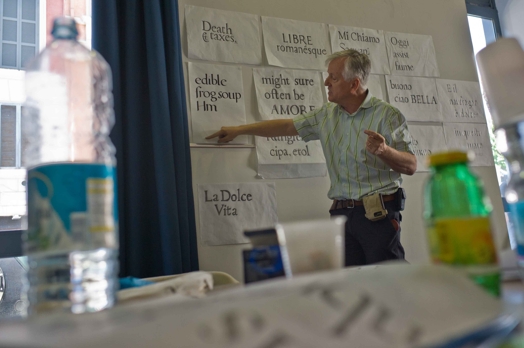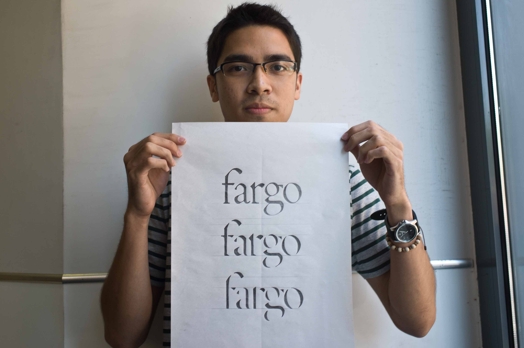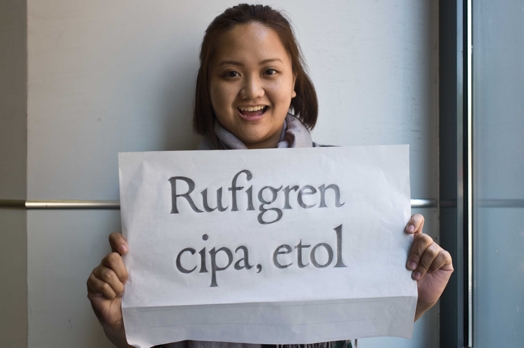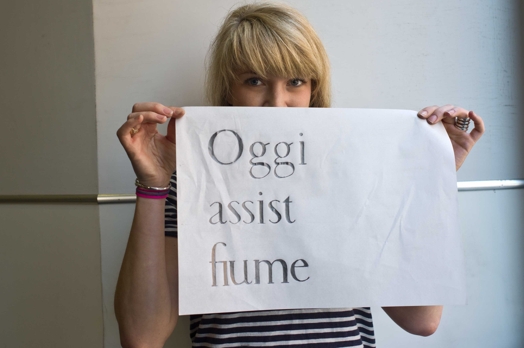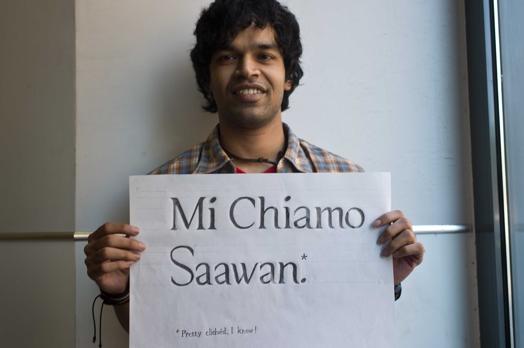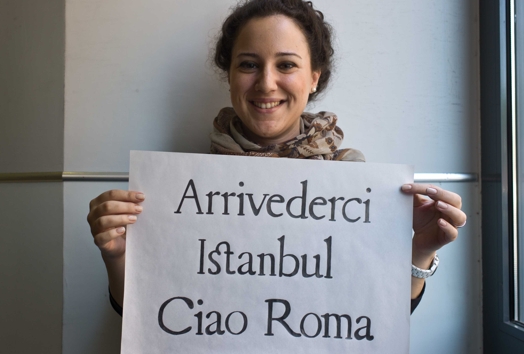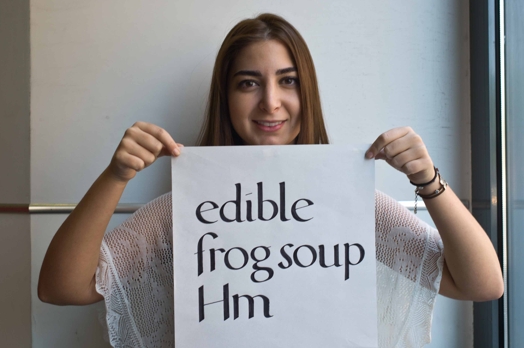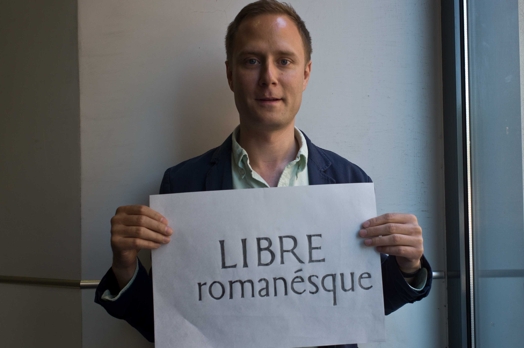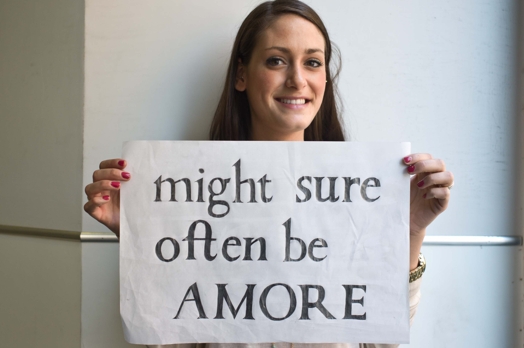Drawing Letters With A 3B Pencil
Photos by Martin Mouret
By Nick Misani
Another beautiful day in sunny Rome; a day filled with typography old and new.
James Clough, with his contagious enthusiasm, guided (and prodded) us along as we meticulously completed our interpretations of classical Roman type in preparation for our 1pm critique. This type of precise work should be carried out in “monastic silence,” said James, “the Italians are very bad at that” and, as it turned out, so were we.
Steve, Louise, and Lita joined us as we were taping our work to the wall and participated in what James warned us would be a “ruthless crit.” He proceeded to comment on each piece in great detail, praising our efforts, the personality of each interpretation, and giving each of us some constructive criticism. The most “ruthless” adjective used was perhaps “quirky.”
Following a quick lunch, James and Lita accompanied us to the Terme di Diocleziano, the grandest baths of the Roman Empire. Before stepping inside, however, James made us all privy to a small typographic secret around the corner from the museum. Gracing the entrance of a building in severe disrepair was a beautiful line of cursive lettering. After days of ogling at the majesty of Imperial Roman typography, we all gasped at the grace and understated elegance of this hidden, hand-lettered jewel.
Inside the museum, James guided us through the many epigraphic inscriptions, from the crude examples of early Latin typographic carvings to the elegance of the Imperial letter. As it turns out, Roman inscriptions were originally painted red,the remainder of the pigment is still visible in some of the better preserved carvings.I took note of this fascinating detail as I collect inspiration for my project.
We said goodbye to James with handshakes, kisses, promises to see him again in Milan or New York, and especially with immense gratitude for these past few days together. Cheers, Mr Clough!

